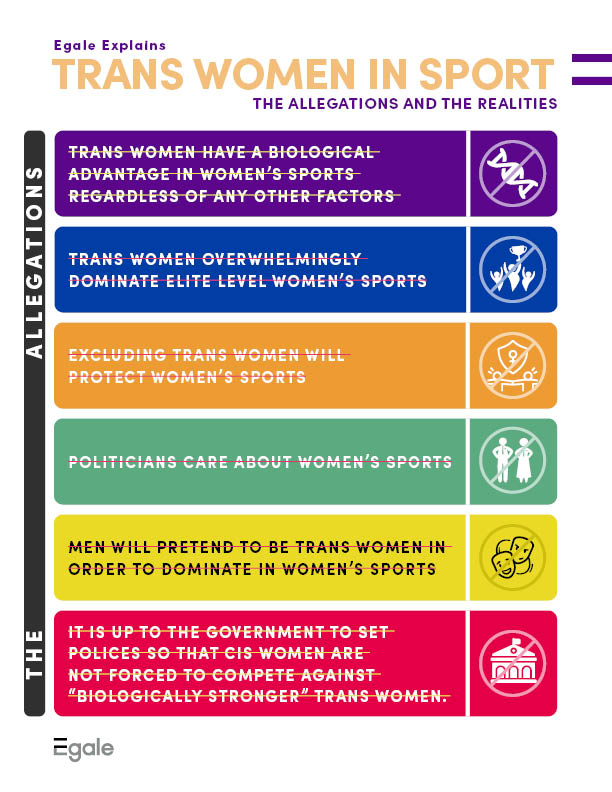The inclusion of trans individuals in sport – in particular trans women has been deemed controversial by many anti-2SLGBTQI narratives. Policies regarding inclusion, or the absence of such policies, have profound implications that extend well beyond the realm of sports, influencing the broader inclusion of transgender people in society. Participation in sport can significantly benefit the physical and mental health of transgender individuals, providing life-saving opportunities and promoting overall well-being.
This resource explains the reality behind many anti-trans allegations including:
- trans women have a biological advantage in women’s sports regardless of any other factors
- trans women overwhelmingly dominate elite-level women’s sports
- excluding trans women will protect women’s sports
- Politicians care about women’s sports
- Men will pretend to be trans women in order to dominate in women’s sports
- It is up to the government to set polices so that cis women are not forced to compete against “biologically stronger” trans women.

This resource is part of Egale Canada’s work to combat anti-2SLGBTQI hate. Use Egale’s Rainbow Action Hub to find more resources and tools to combat the rise of anti-2SLGBTQI hate.
